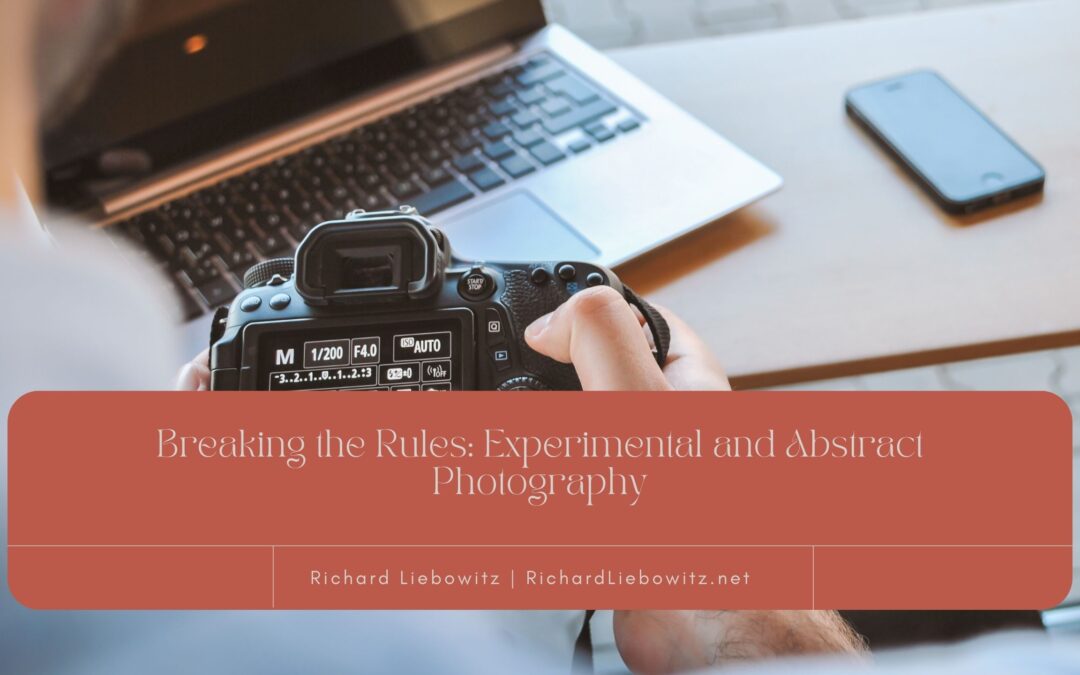Photography has evolved dramatically since its inception in the 19th century. While the art form initially aimed to capture the world as realistically as possible, it has since grown to encompass a wide range of styles and techniques. Experimental and abstract photography are two such styles that challenge the conventional rules and push the boundaries of what is possible with a camera.
What is Experimental Photography?
Experimental photography is a genre that encourages photographers to explore unconventional techniques, materials, and processes to create unique and often unpredictable images. It involves a willingness to take risks, make mistakes, and embrace the unexpected. Experimental photographers often break away from traditional methods to discover new ways of expressing themselves through their art.
Key Elements of Experimental Photography:
- Alternative Processes: Experimental photographers often venture into alternative photographic processes, such as cyanotype, photograms, chemigrams, and pinhole photography. These processes involve unusual materials and techniques to produce captivating results.
- Manipulation: Experimentation can involve manipulating the photographic image either in-camera or during post-processing. Techniques like double exposure, light painting, and image blending are common ways to create unique effects.
- Texture and Emotion: Experimental photography often prioritizes texture and emotion over realism. Photographers may intentionally introduce imperfections, blur, or distortion to convey a mood or tell a story.
- Found Objects: Some experimental photographers incorporate found objects, textures, or even other photographs into their work, creating visually striking and thought-provoking compositions.
Examples of Experimental Photography Techniques:
– Cyanotype: A process that uses a photosensitive solution to create blue-toned images, cyanotypes are known for their ethereal and dreamy quality.
– Photograms: This technique involves placing objects directly onto photographic paper and exposing them to light, resulting in abstract and often surreal images.
– Chemigrams: Chemigrams are created by painting or drawing on photographic paper with chemicals and then processing the paper to reveal the image. The process allows for intricate, painterly effects.
– Double Exposure: Photographers intentionally expose the same frame of film or sensor multiple times, resulting in layered and often abstract compositions.
What is Abstract Photography?
Abstract photography is a style that emphasizes the visual elements of an image, such as shape, color, line, texture, and form, rather than representing a specific subject. In abstract photography, the subject matter is often secondary to the way it is portrayed. Abstract photographers use various techniques to distill reality into its most basic visual components, creating images that challenge the viewer’s perception.
Key Elements of Abstract Photography:
- Minimalism: Abstract photography often relies on minimalist compositions, focusing on simplicity and the elimination of distractions.
- Color and Form: Color plays a significant role in abstract photography, as photographers use it to convey mood and emotion. The form and arrangement of elements within the frame are also essential in creating striking abstract compositions.
- Patterns and Textures: Abstract photographers often seek out patterns and textures in everyday scenes that may go unnoticed by others. These elements can become the central focus of the image.
- Ambiguity: Abstract photography frequently blurs the line between reality and abstraction, leaving room for interpretation and imagination on the part of the viewer.
Examples of Abstract Photography Techniques:
– Macro Photography: Photographing subjects at extreme close-up magnification can reveal intricate details and textures that are otherwise invisible to the naked eye.
– Long Exposure: Using long exposure times, photographers can capture the movement of light and create abstract streaks, blurs, and patterns in their images.
– Multiple Exposure: Combining multiple exposures in-camera can produce abstract and surreal effects, with one image blending seamlessly into another.
– Intentional Camera Movement (ICM): By intentionally moving the camera during the exposure, photographers can create abstract and impressionist images with a sense of motion and fluidity.
Why Experiment with Abstract Photography?
Both experimental and abstract photography offer artists a platform for self-expression and creativity that breaks free from the constraints of traditional photography. Here are some reasons why photographers are drawn to these unconventional styles:
- Artistic Freedom: Experimental and abstract photography grant artists the freedom to explore and experiment without rigid rules or expectations.
- Personal Expression: These styles allow photographers to convey their emotions, ideas, and unique perspectives through their work.
- Challenge Convention: Experimentation and abstraction challenge conventional notions of photography, pushing the boundaries of what is possible with the medium.
- Unpredictability: Embracing unpredictability and embracing mistakes can lead to unexpected and captivating results that spark curiosity and intrigue.
- Innovation: By venturing into unconventional territory, photographers can discover new techniques and approaches that expand the possibilities of their art.
Experimental and abstract photography offer photographers the opportunity to challenge the norm, break the rules, and unleash their creativity. These styles encourage artists to embrace the unknown, push the boundaries of what is possible with a camera, and communicate their unique perspectives and emotions through their images. Whether you’re a seasoned photographer looking for a new challenge or someone interested in exploring the limitless world of visual art, experimental and abstract photography provide a captivating journey into the realm of the unconventional.

